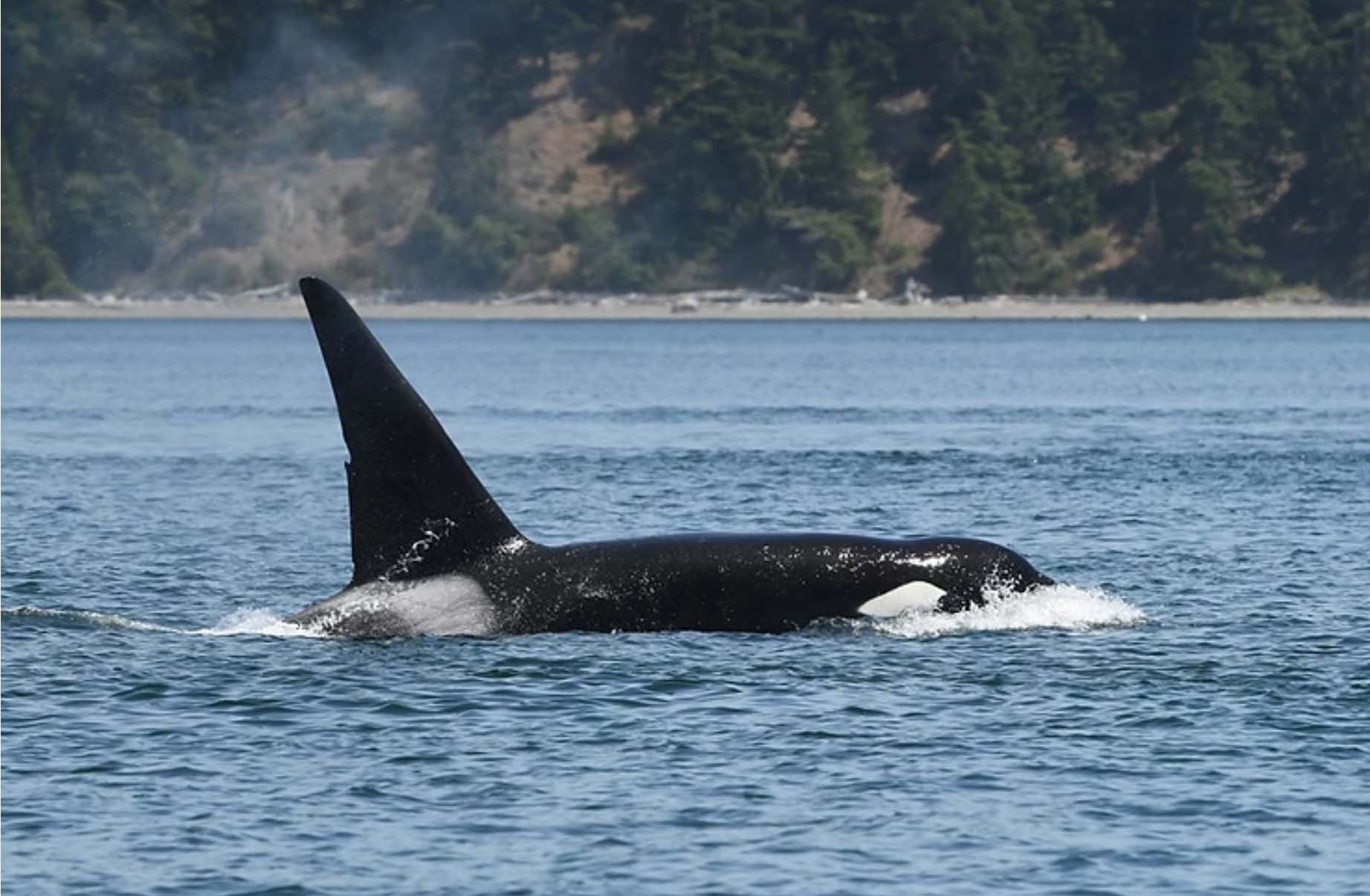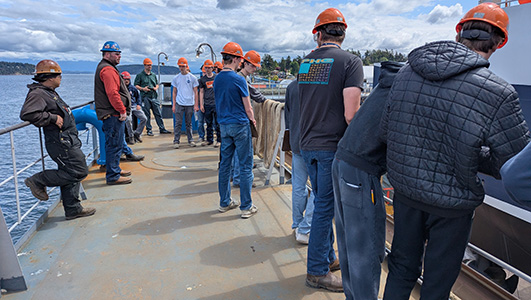— from Center for Whale Research —
Killer whales are second only to humans as the most widely distributed mammal on earth. The species is found in all oceans, but is most commonly found in coastal waters at cooler latitudes. Their widespread distribution and their closely knit social structure have had the effect of producing distinctive populations that do not intermix. In the Northeastern Pacific Ocean, three distinct ecotype forms are recognized: Residents, Bigg’s Transients, and Offshores.
Most familiar are the Resident killer whales. They are commonly found in social groups called pods that usually number 10 to 25 or more whales. Resident pods inhabit coastal waters where their most reliable or preponderant food source, salmon, is available, particularly Chinook salmon that were historically available year-round.
Bigg’s Transient killer whales have a markedly different lifestyle. They travel over a wider range, typically in small groups, but occasionally aggregating into larger groups. The diet of the Bigg’s transients is predominantly other marine mammals, such as seals and porpoises.
The Offshores have been the least studied. They are usually found in large pods well offshore. They appear to feed mostly on fish and may have a taste for shark.
The three populations also differ from each other in several morphological features. The shape of the tip of the dorsal fin and the saddle patch are key identifying elements.
DORSAL FIN and SADDLE PATCH DESCRIPTIONS
Note. Orcas’ left and right side saddle patch can vary dramatically in shape (see J27 photographs above).

Resident orcas: Dorsal fin has rounded tip, but usually with a sharper angle at the rear corner. Open saddle patches are common, with significant variations in shape.

Bigg’s Transient orcas: Dorsal fin tip generally pointed. Saddle patch large and uniformly grey. There have been no open saddles documented in Bigg’s Transients identified to date.

Offshore orcas: Dorsal fin continuously rounder over the tip, usually lacks the sharper angle at the rear corner. Saddle patch either solid gray or occasionally open.
Learn more about the Southern Resident orcas on the About Orcas page of whaleresearch.com.

This material and illustrations appear in KILLER WHALES Magnificent Creatures of the Salish Sea by Ken Balcomb and Rick Chandler, Bainbridge Island Historical Museum and the Centre for Whale Research © 2016. Used with permission.
**If you are reading theOrcasonian for free, thank your fellow islanders. If you would like to support theOrcasonian CLICK HERE to set your modestly-priced, voluntary subscription. Otherwise, no worries; we’re happy to share with you.**








